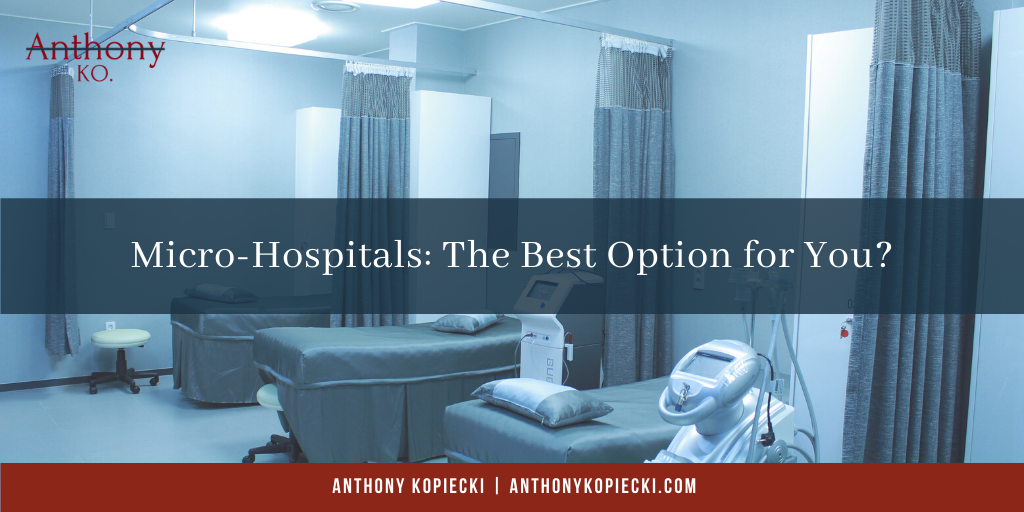It’s fair to say that nobody wants to get sick. It inevitably happens to everyone at some point and when the time comes to seek out care, the choices these days are more numerous than ever. A patient can find service at a sprawling mega-facility, like many of today’s state-of-the-art hospitals, local physician’s offices, specialized clinics and even grocery and drug stores that offer quick-care options for less serious ailments. While there are options out there for almost anything, knowing where to go can be a little overwhelming. One option that you may not have considered in the past is the micro-hospital.
A micro-hospital is exactly what it sounds like – a miniature version of a typical community hospital. They offer care comparable to a large facility, and range anywhere from 15-50 beds. These facilities are meant to bridge the gap between fast-care and urgent-care clinics and larger acute-care facilities. Typically found in communities or neighborhoods, they can range anywhere from 30,000 – 60,000 square feet, making them a less-intimidating option for patients who dread the thought of navigating the traditional hospital system.
Free standing emergency rooms and urgent care centers are only equipped to offer short-term care and are usually only used for pre-ambulatory care. Micro-hospitals, on the other hand, can come close to offering the same level of service and expertise of a large community hospital. They offer a higher value-proposition for the patient as well. With fewer beds, there is a lower doctor/patient ratio, which yields higher patient satisfaction and more individualized care. They boost efficiency in terms of wait times and discharge times, and can operate in both primary and secondary care capacities. Ultimately, this builds a kind of “brand loyalty” among the patient base, and many who receive care at these facilities keep coming back because they walk away not only healthier, but happier for their positive experience.
In addition to the quality and convenience, micro-hospitals also offer a cost savings. Although overall more expensive than traditional urgent care, they create more value compared the massive community hospitals. The challenge these facilities face is ensuring that they have the right staff in-house to cater to patient needs in ways career healthcare workers have not done in the past. As the trend continues over the formative years for this type of business, operational strategies and facility design that maximize efficiency and satisfaction can be expected to grow and evolve dramatically.

